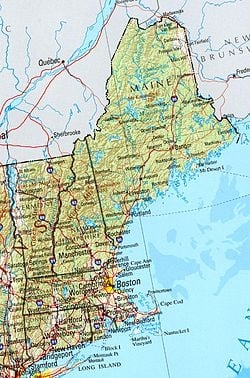You have /5 articles left.
Sign up for a free account or log in.

Wikipedia
The political leanings of professors are much debated. While studies consistently show that faculty members, on average, lean left, there is no consensus on the meaning of these findings.
New research on professors and their politics suggests that the imbalance in the political views of professors in much of the nation becomes a more significant imbalance because of one region: New England.
The research was conducted by Samuel J. Abrams, a professor of politics at Sarah Lawrence College and a research fellow at the Hoover Institution at Stanford University. He used data from the Higher Education Research Institute at the University of California, Los Angeles, which conducts periodic surveys of faculty members and asks them, among other things, about their political views. Recent surveys have shown that faculty members are moving more to the left than has been the case in the past.
Abrams used data that the Higher Education Research Institute provided him to look for patterns on the impact of discipline, type of college and other factors. He found that region was the most significant factor, even controlling for institution type of discipline of faculty members. (The HERI data are on four-year college and university faculty members, and much research suggests that community college faculty members are more centrist than are their four-year colleagues.)
In 2014, Abrams found that nationally, colleges and universities had a six to one ratio of liberal to conservative professors. In New England, the figure was 28 to one.
While New England is known to be more liberal than much of the country, Abrams notes that he did not find this level of imbalance in other regions (such as the Pacific West) that are also politically liberal. He has not published his findings in a journal, but shared the results in an essay in Sunday's New York Times.
In the essay, he closes by writing: "I cannot say for certain why New England is so far to the left. But what I can say, based on the evidence, is that if you are looking for an ideologically balanced education, don’t put New England at the top of your list."
In an interview with Inside Higher Ed, Abrams offered his working theory for why New England academics are more liberal than their counterparts and why it matters.
Abrams said he thinks the key factor about New England colleges is that, on average, they are older than their counterparts and were founded with a tradition that is less practical than colleges in other parts of the country. In much of the county, higher education grew as a result of land-grant universities (which have always had practical agendas, even as they have also offered liberal arts education), or in regions that emphasized technological innovation. A comparison of Stanford and Harvard Universities, Abrams said, would find the former much closer to industry and inventions, with the latter more resistant to business ties.
While there are obvious exceptions (the Massachusetts Institute of Technology in New England or liberal arts colleges elsewhere), Abrams said that he believes the greater embrace of the practical outside New England results in a more politically diverse faculty.
Abrams said that -- whatever the reason for the imbalance he found in New England -- the lack of conservative faculty members should be of concern. Abrams, himself a conservative, is proof that nonliberal professors can thrive at colleges where they are in the political minority. He was not only hired but tenured at Sarah Lawrence, not known as a hotbed of the right.
While he and many of his colleagues encourage students to read and study a variety of viewpoints, Abrams said that there is a "subtle nudging" from liberal professors at many institutions in which they naturally present more ideas that they support, and may hire those who share their views. "People want like-minded people in their departments," he said.
A book published this year, Passing on the Right: Conservative Professors in the Progressive University (Oxford University Press), argues that conservative professors, though in the minority, can do quite well in academe. Abrams said he agreed with a caveat. "It's possible but takes a lot of work," he said.
What to do about the imbalance? Abrams said that faculty hiring departments should think about where there are subtle ways they may favor job candidates with similar views, and that they should think about whether they are seeking diverse views.
But Abrams said that he does not advocate affirmative action for conservative academics. "Any forms of litmus test are dangerous," he said.
Joshua Dunn, chair of political science at the University of Colorado, Colorado Springs, and co-author of Passing on the Right, said via email that he thought Abrams's theories about New England academics are "as plausible as any others." He said that the findings could suggest difficulty for conservative academics in New England.
Interviews for Passing on the Right showed that "having at least one or two conservatives in a department can make a substantial difference in whether or not a conservative job candidate gets considered. It doesn’t mean that a conservative will be hired, but if you have someone who isn’t alarmed at signs of conservatism it can help get your file past the first cut and possibly an on-campus interview and eventually a job offer. In a region like New England with very few conservative faculty, it might be difficult for applicants with conservatives markers in their vitas to make it to the short list."




